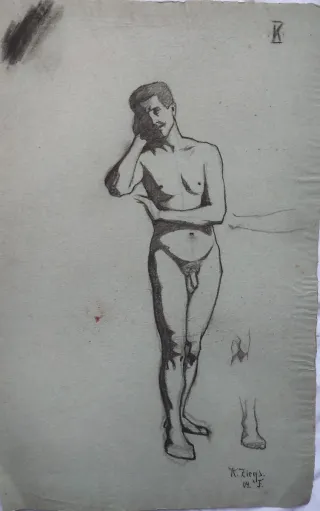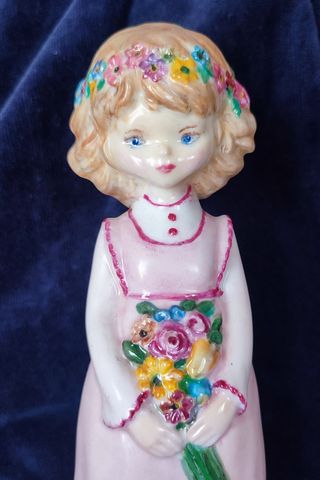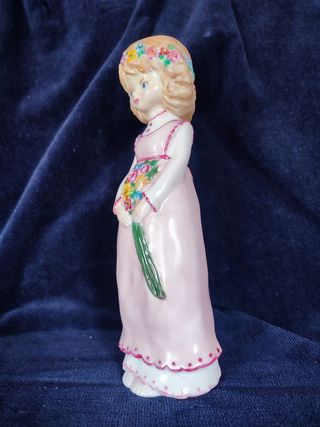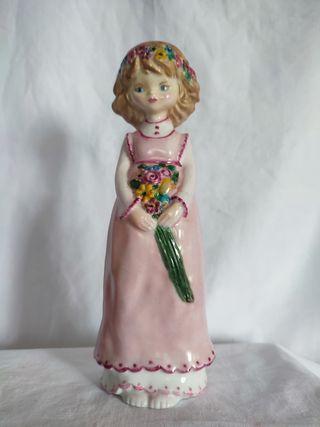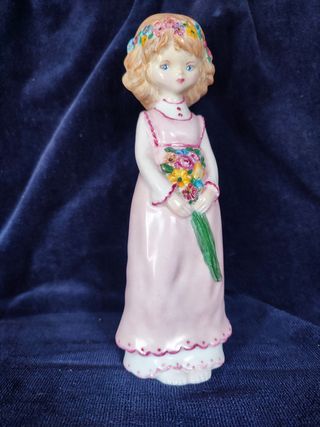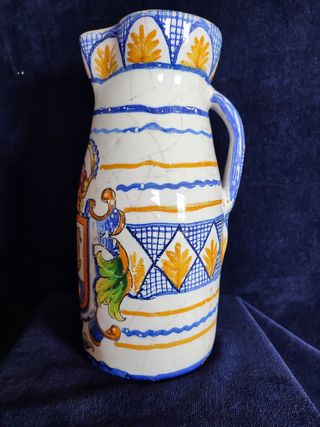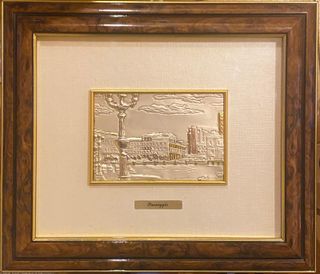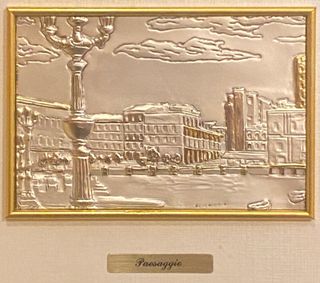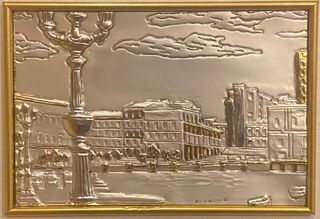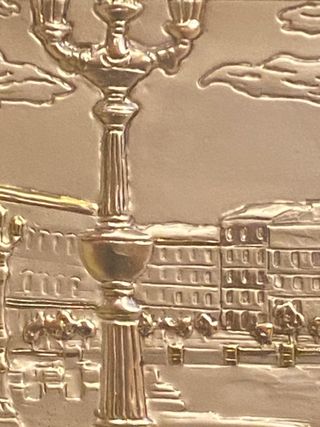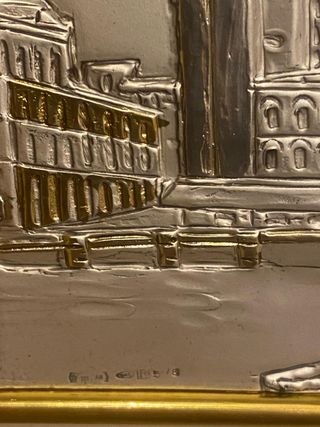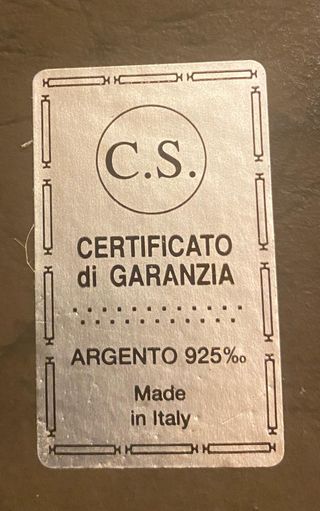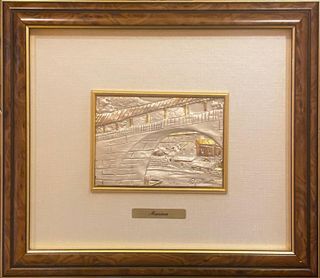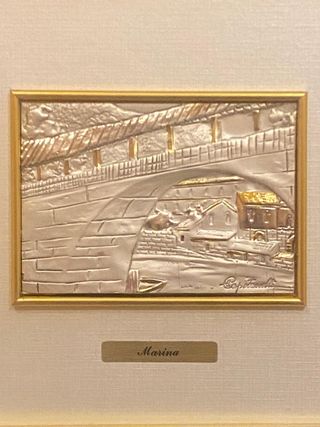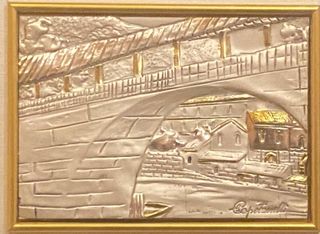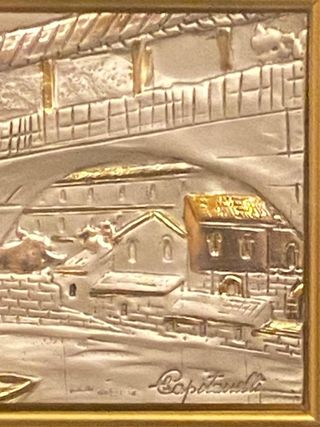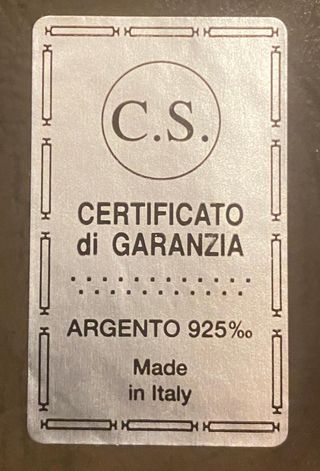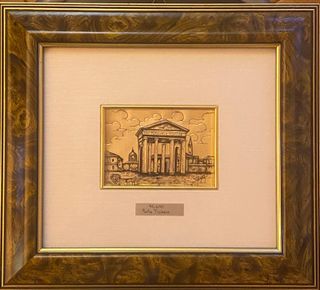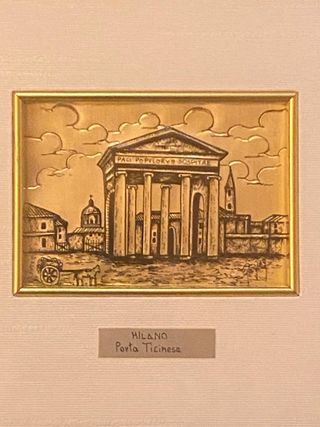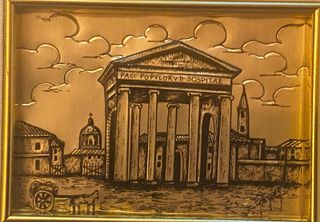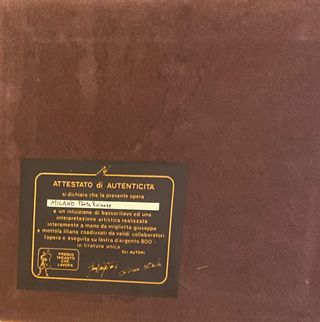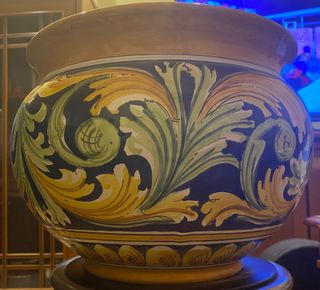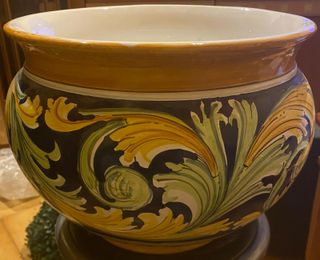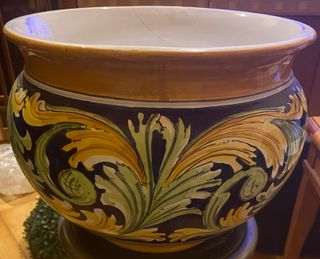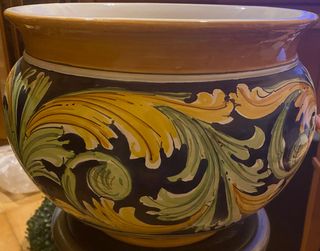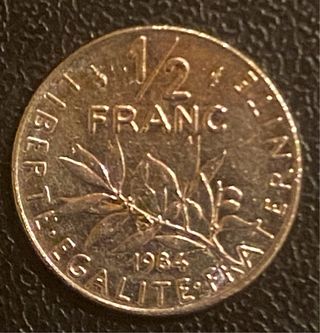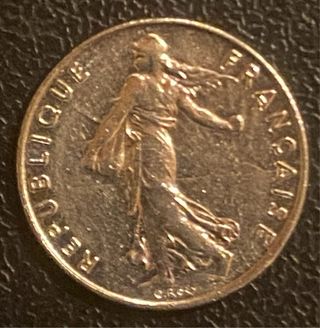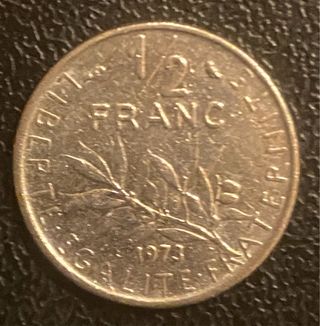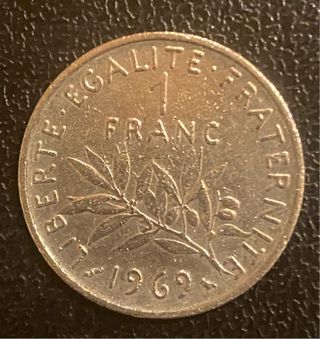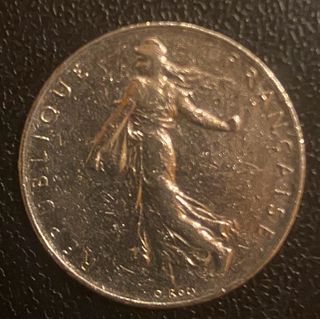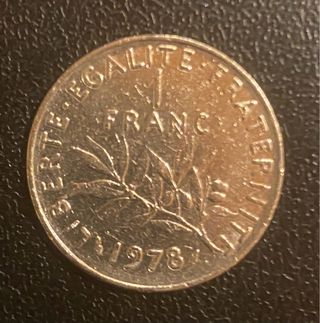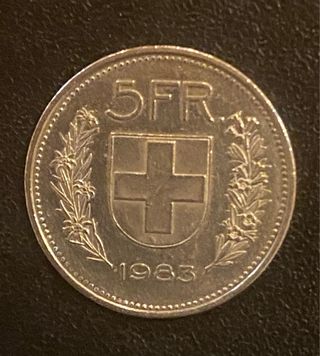
Oggetti da collezione Chiaramonte Gulfi
Novità
Nudo maschile carboncino 1911 Kurt Ziegs 1884/971
Disegno a carboncino raffigurante un nudo maschile, datato 1911. Include anche uno schizzo a sanguigna di un volto maschile. - Tecnica mista: carboncino e sanguigna. - Anno: 1911. - Soggetto: Figura maschile intera e ritratto.
2 Nudi maschili primi '900 carboncini
Due disegni a matita raffiguranti nudi maschili, databili ai primi anni del XX secolo. Entrambi i disegni sono firmati. - Disegni originali. Kurt Ziegs Amstrad 1884/1971 cm 31x48 - Tecnica mista (matita/carboncino). - Firmati dall'artista.
Porcellana antica tedesca dipinta a mano
Statuina in porcellana dipinta a mano, leggerissima pesa g 150
Brocca catalana 1800
Brocca catalana 1800
Acquerello Frankfurt 1904
Autore Kurt Ziegs, Darmstadt 1884 1971
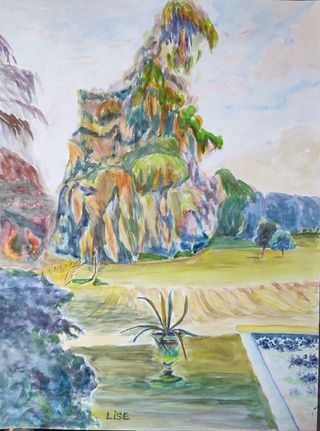
Acquerello su cartoncino
Lise Margrethe Rasmussen
Bicchieri Kronenbourg
Tre bicchieri in vetro marca Kronenbourg, come nuovi. Da 0.20 l
Bassorilievo Argento925 Paesaggio
Bassorilievo Argento 925 "Paesaggio" con Certificato di Garanzia Cornice in radica
QUADRO"Marina"bassorilievoCAPITANELLI Argento925
"Marina" QUADRO bassorilievo a tiratura unica CAPITANELLI CREAZIONI ARTISTICHE su ARGENTO 925 con CERTIFICATO DI GARANZIA CORNICE IN RADICA
Quadro Bassorilievo Miglietta-Mottola Argento800
Bassorilievo "MILANO Porta Ticinese" in tiratura unica di Miglietta Giuseppe E Mottola Liliana In Lastra D Argento 800 con Attestato di Autenticità CORNICE IN RADICA
PORTAVASO CERAMICA CALTAGIRONE ORNATO MULTICOLOR
Portavaso in Ceramica Siciliana di Caltagirone - pezzo unico autentico dipinto a mano - Decorazione: Multicolor original handmade Diametro bocca interna: 35 cm Dimensioni esterne: D 44 cm x H 30 cm
Francs Set, coins from France 1968-84
1 franc 1969 1 franc 1978 ½ franc 1968 ½ franc 1973 ½ franc 1984 more info on my profile
Francia ½ franc, 1984
Paese Francia Periodo Quinta Repubblica (1959 - 2002) Tipo di moneta Monete circolanti Valore ½ franc Anno 1984 Composizione Nichel Tipo di bordo Zigrinato Forma Rotonda Allineamento Moneta (180°) Peso (g) 4.5 Diametro (mm) 19.5 Spessore (mm) 1.9
Francia ½ franc, 1973
Paese Francia Periodo Quinta Repubblica (1959 - 2002) Tipo di moneta Monete da collezione Valore ½ franc Anno 1973 Soggetto Moneta spessa /argento/ Composizione Argento 0.950 Tipo di bordo Liscio Forma Rotonda Allineamento Moneta (180°) Peso (g) 11 Diametro (mm) 19.5 Spessore (mm) 3.8
Francia ½ franc, 1968
Paese Francia Periodo Quinta Repubblica (1959 - 2002) Tipo di moneta Monete da collezione Valore ½ franc Anno 1968 Soggetto Moneta spessa/nichel/ Composizione Nichel Tipo di bordo Liscio Forma Rotonda Allineamento Moneta (180°) Peso (g) 9 Diametro (mm) 19.5 Spessore (mm) 3.8
1 FRANC Semeuse, nickel 1969 Paris
Tipo : 1 FRANC Semeuse, nickel Data: 1969 Nome della officina / città: Paris Quantità coniata : 70601050 Metallo : nichel Diametro : 24 mm Asse di coniazione : 6 h. Peso : 6 g. Orlo : striée
1 Franc 1978 Republique Francaise
Trasmettitore Francia Periodo della Quinta Repubblica (1958-oggi) Tipo Parte comune Date 1959-2001 Valore 1 franco (1 FRF) Valuta Nuovo franco (1960-2001) Composizione Nichel Peso 6 g Diametro 24 mm Spessore 1,79 mm Forma rotonda Tecnica del colpo di stampa Orientamento al conio della valuta ↑↓ Demonetizzato il 17 febbraio 2002
Francs Set, Coins from Switzerland 1969-83
1/2 franc 1970 1/2 franc 1983 1 franc 1969 1 franc 1978 2 franc 1980 (no available) 5 franc 1983 More info on my profile.
Half Franc 1970, Coin from Switzerland
Size 18.2000 mm Thickness 1.2500 mm Mass 2.2000 g The Half Franc coin is a circulating denomination of the Swiss Franc. Given that Switzerland has four official languages, it has three different names: Franken in German, franc in French and Romansh, and franco in Italian. It is worth noting that the denomination is a "half franc" and not "50 centimes" for historic reasons, being initially modelled on a denomination of the French franc which was a "demi franc", and to distinguish it from the smaller denominations; initially, all "francs" (including the half franc) were full-bodied silver, while the centimes were either billon (low-grade silver) or base metal. The first version of the half franc coin featuring a seated figure of Helvetia was designed by Friedrich Fisch and engraved by Antoine Bovy. The reverse shows the value, a numeral ½, and a language-neutral abbreviation of the denomination, Fr. within a wreath whose left part consists of oak branches and the right part of various Alpine flowers. This original reverse has remained unchanged and is still used on current coins. This version was heavier than current coins (2.5 grams) and made of 0.900 silver. It was only issued in 1850 and 1851 and was struck by the Paris Mint. It was demonetised on 1st January 1869, then for several years there were no half franc coins in circulation. In 1875, the obverse was changed to a new design by Albert Walch featuring a Standing Helvetia. This version was issued to the specifications of the Latin Monetary Union and had a composition of 83.5% silver and 16.5% copper. This second silver version of the Half Franc was issued until 1967 and was demonetised on 1st April 1971. Current Half Franc coins are made of cupro-nickel (75% copper, 25% nickel); this version was first issued in 1968 and is still currently produced. Coins issued in 1969 have been in circulation for 55 years.
Half Franc 1983, Coin from Switzerland
Size 18.2000 mm Thickness 1.2500 mm Mass 2.2000 g The Half Franc coin is a circulating denomination of the Swiss Franc. Given that Switzerland has four official languages, it has three different names: Franken in German, franc in French and Romansh, and franco in Italian. It is worth noting that the denomination is a "half franc" and not "50 centimes" for historic reasons, being initially modelled on a denomination of the French franc which was a "demi franc", and to distinguish it from the smaller denominations; initially, all "francs" (including the half franc) were full-bodied silver, while the centimes were either billon (low-grade silver) or base metal. The first version of the half franc coin featuring a seated figure of Helvetia was designed by Friedrich Fisch and engraved by Antoine Bovy. The reverse shows the value, a numeral ½, and a language-neutral abbreviation of the denomination, Fr. within a wreath whose left part consists of oak branches and the right part of various Alpine flowers. This original reverse has remained unchanged and is still used on current coins. This version was heavier than current coins (2.5 grams) and made of 0.900 silver. It was only issued in 1850 and 1851 and was struck by the Paris Mint. It was demonetised on 1st January 1869, then for several years there were no half franc coins in circulation. In 1875, the obverse was changed to a new design by Albert Walch featuring a Standing Helvetia. This version was issued to the specifications of the Latin Monetary Union and had a composition of 83.5% silver and 16.5% copper. This second silver version of the Half Franc was issued until 1967 and was demonetised on 1st April 1971. Current Half Franc coins are made of cupro-nickel (75% copper, 25% nickel); this version was first issued in 1968 and is still currently produced. Coins issued in 1983 have been in circulation for 41 years.
One Franc 1978, Coin from Switzerland
Size 23.2000 mm Thickness 1.5500 mm Mass 4.4000 g The One Franc coin is a circulating denomination of the Swiss Franc. Given that Switzerland has four official languages, it has three different names: Franken in German, franc in French and Romansh, and franco in Italian. The first version of the one franc coin featuring a seated figure of Helvetia was designed by Friedrich Fisch and engraved by Antoine Bovy. The reverse shows the value, a numeral 1, and a language-neutral abbreviation of the denomination, Fr. within a wreath whose left part consists of oak branches and the right part of various Alpine flowers. This original reverse has remained unchanged and is still used on current coins. This version was heavier than current coins (5 grams) and made of 0.900 silver. In 1875, the obverse was changed to a new design by Albert Walch featuring a Standing Helvetia. The coins were issued to the specifications of the Latin Monetary Union, so the metal was somewhat debased to 0.835 silver. This second silver version of the One Franc was issued until 1967 and was demonetised on 1st April 1971. Current One Franc coins are made of cupro-nickel; this version was first issued in 1968 and is still currently produced. 1 Fr. coins issued in 1978 have now been in circulation for 46 years.
One Franc 1969, Coin from Switzerland
Size 23.2000 mm Thickness 1.5500 mm Mass 4.4000 g The One Franc coin is a circulating denomination of the Swiss Franc. Given that Switzerland has four official languages, it has three different names: Franken in German, franc in French and Romansh, and franco in Italian. The first version of the one franc coin featuring a seated figure of Helvetia was designed by Friedrich Fisch and engraved by Antoine Bovy. The reverse shows the value, a numeral 1, and a language-neutral abbreviation of the denomination, Fr. within a wreath whose left part consists of oak branches and the right part of various Alpine flowers. This original reverse has remained unchanged and is still used on current coins. This version was heavier than current coins (5 grams) and made of 0.900 silver. In 1875, the obverse was changed to a new design by Albert Walch featuring a Standing Helvetia. The coins were issued to the specifications of the Latin Monetary Union, so the metal was somewhat debased to 0.835 silver. This second silver version of the One Franc was issued until 1967 and was demonetised on 1st April 1971. Current One Franc coins are made of cupro-nickel; this version was first issued in 1968 and is still currently produced. 1 Fr. coins issued in 1969 have now been in circulation for 55 years.
Five Francs 1983, Coin from Switzerland
Size 31.4500 mm Thickness 2.3500 mm Mass 13.2000 g The Five Francs coin is a circulating denomination of the Swiss Franc. Given that Switzerland has four official languages, the currency has three different names: Franken in German, franc in French and Romansh, and franco in Italian. Initially when federal Swiss coinage was introduced in 1850, all "francs" (including the half franc) were full-bodied silver, while the centimes were either billon (low-grade silver) or base metal.




